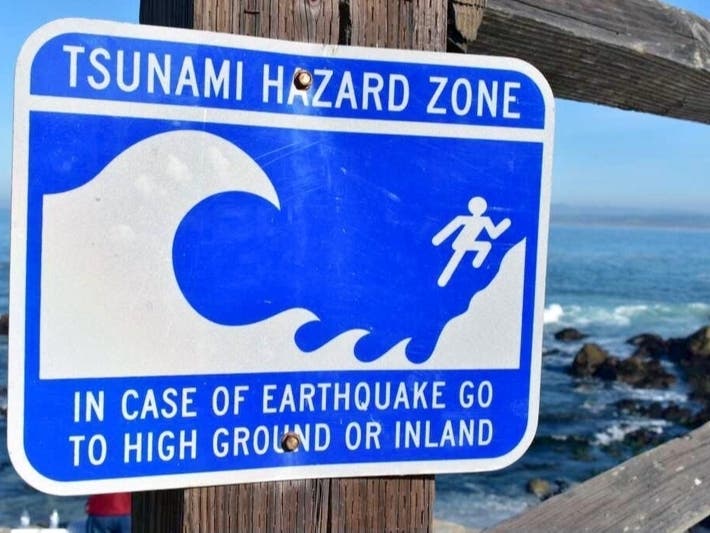
The Los Angeles basin is home to countless faults that range from thousands of feet to hundreds of miles in length. These include normal faults, reverse faults, thrust faults and strike-slip faults.
The Newport-Inglewood Fault Zone (NIFZ) — a series of faults that extends between Newport and Inglewood, California — is one of the major sources of seismicity in the area. Many experts believed this zone is associated with several notable earthquakes, particularly in the Long Beach-Seal Beach area, including the 1933 magnitude-6.4 Long Beach earthquake.
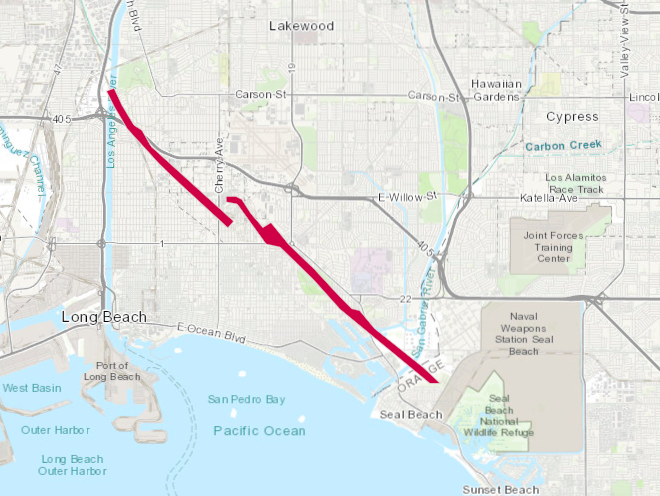
Less widely known are the basin’s numerous near-surface faults, some of which were recently identified in the immediate Seal Beach area. Scientists at 3D Seismic Solutions, a seismic data consulting company, in partnership with researchers at Caltech, recently discovered one particularly active fault in this area. The finding highlights the difficulty faced by emergency managers, city planners and engineers in knowing potential hazards when planning for future earthquakes.
Identifying near-surface faults
A high-density seismic survey of the subsurface was conducted in early 2017 over approximately 28 square miles (72 square kilometers) of Long Beach and Seal Beach. A total of 5,354 sensors continuously recorded ground movement in the area for eight weeks.
At one point during this period, vibrator trucks were deployed to generate seismic waves within the survey area. These waves reflect off features below ground — such as faults — and are detected by the sensors at the surface. The energy these vibrator trucks put into the ground is benign and undetectable by humans at the surface, but akin to an MRI, the bouncing waves allow us to generate a three-dimensional image of the subsurface down to 14,000 feet below sea level.
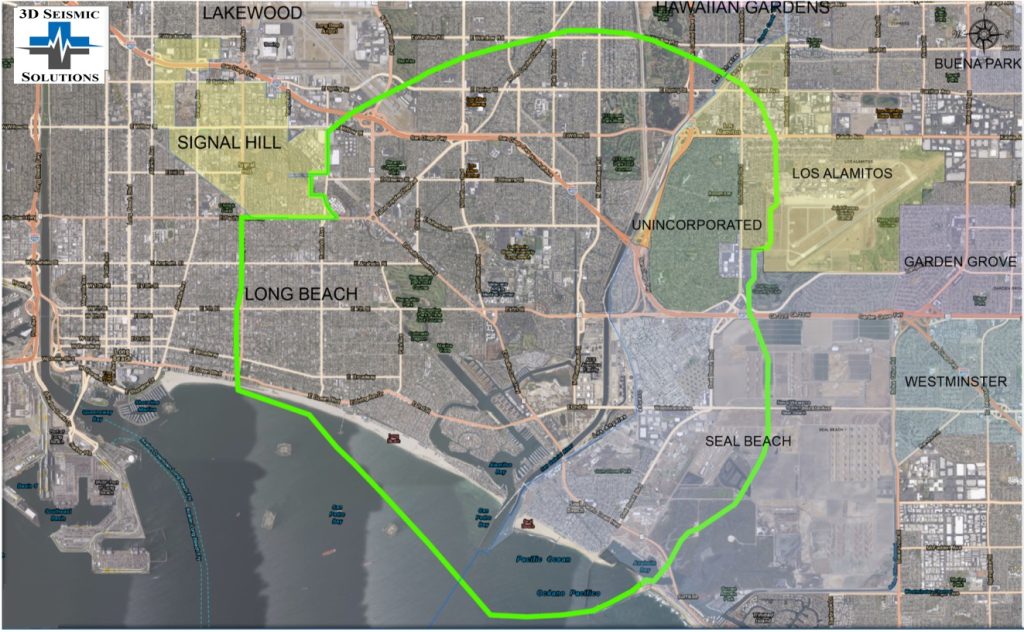
The subsurface data revealed several faults that had not been previously identified. These shallow faults extend upward to within 300 feet (90 meters) of the surface, however human activity has obscured meaningful fault information higher up.
Our observations in the area suggest that these faults have also deformed sediments near the surface relatively recently, indicating these areas, shown in red on the map below, may be subject to continued deformation.
Although it is impossible to predict when or how likely these faults are to move in the future, these data suggest they are active.
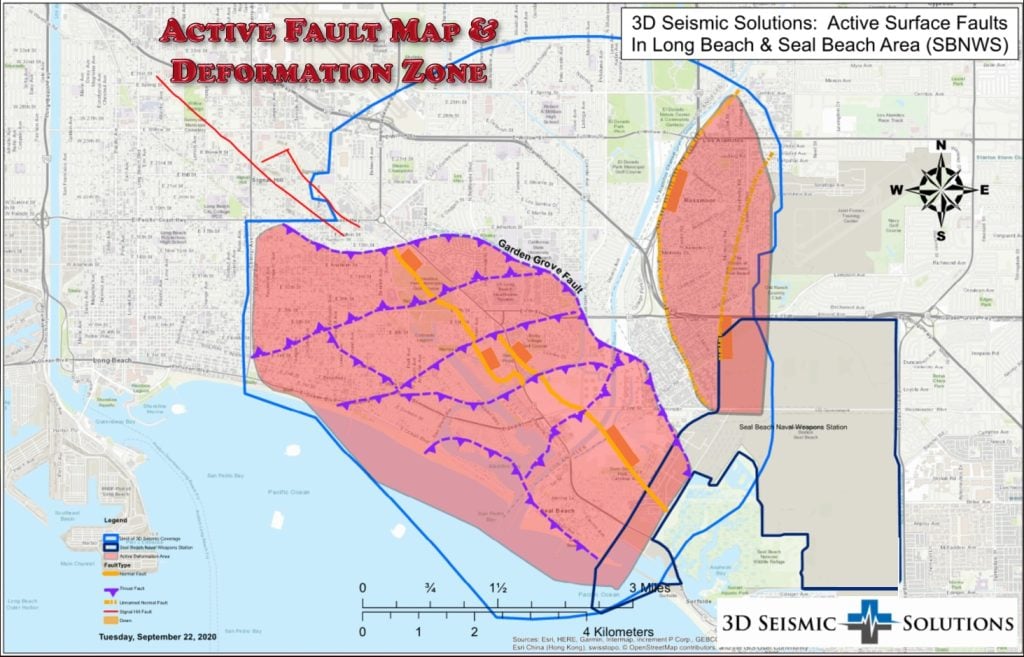
Thousands of tiny earthquakes
In addition to the bouncing seismic waves from the vibrating trucks, the sensors detected more than 3,000 micro-earthquakes during the eight-week period. Micro-seismic events are small earthquakes that are imperceptible by people, even those who are standing directly on the epicenter.
Seismic sensors record these tiny events that occur along faults when they slip or creep. These micro-earthquakes do not pose a danger and can even help scientists locate otherwise hidden faults.
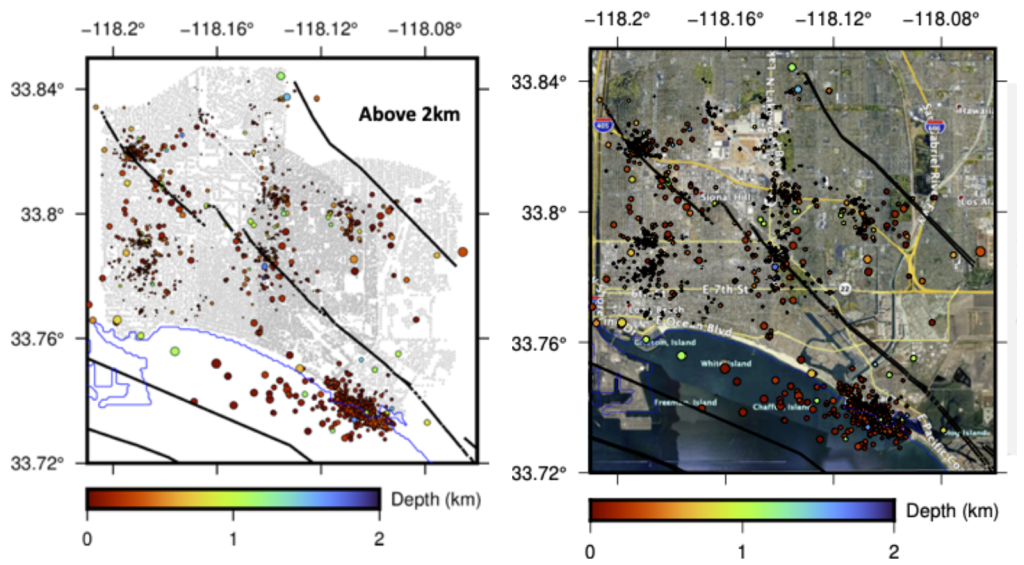
Researchers at Caltech plotted the epicenters of the micro-seismic events onto our map and found that many of the events struck in a cluster along a section of the coast, close to one of our newly mapped faults. The micro-earthquakes occurred between tens of feet to more than one mile (several meters to two kilometers) below the surface, which is consistent with the inferred depth of this fault. The strong correlation between the events and the fault location indicates the fault was active during the eight-week period the sensors were deployed.
If the events were related to human activities, such as construction or drilling, they would likely be dispersed throughout the urban area. Alternatively, if they were seismic noise related to waves crashing on the beach, we would expect them to be present along the entire shoreline. Yet, the linear cluster does not extend north of the San Gabriel River; it abruptly ends at a point where the newly mapped fault bends inland.
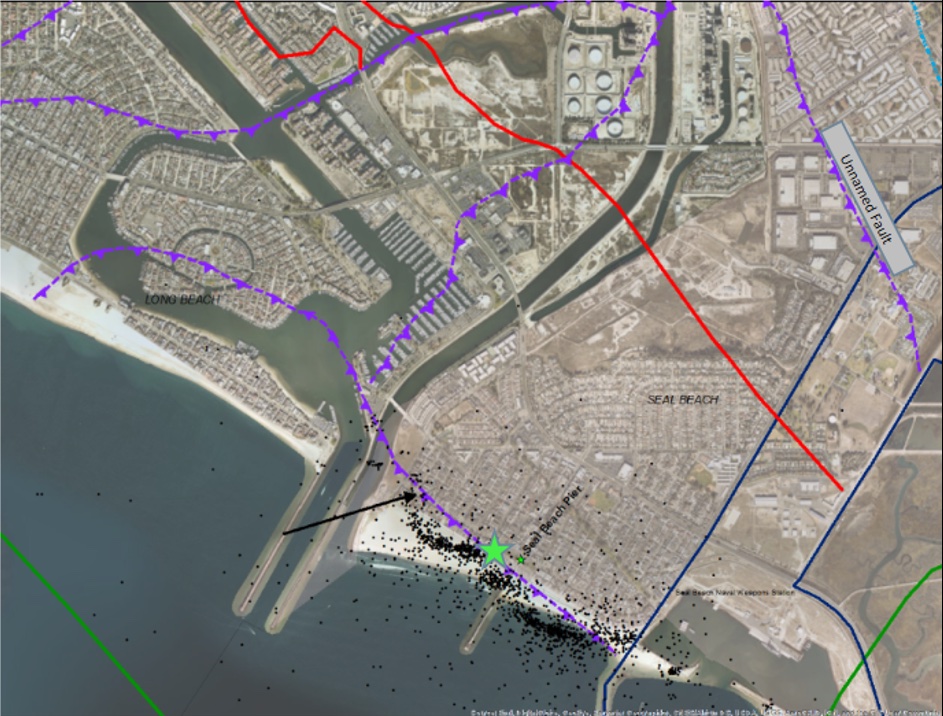
Seismic hazard from unknown faults
The Alquist-Priolo Act was created following the 1971 magnitude-6.6 San Fernando Valley earthquake, which cause widespread damage to structures when the Sierra Madre Fault slipped at the surface. The intent of the act was to reduce earthquake loses by regulating development near active surface faults. However, as demonstrated by the 1933 Long Beach earthquake, and more recently by the magnitude-6.7 Northridge earthquake, severe damage can occur even when a fault does not rupture all the way to the surface.
Some of the major challenges in assessing seismic hazard include identifying subsurface faults and knowing how the fault will move. Faults that are not easily observed in a landscape, either because they do not reach the surface or evidence of offset has been paved over or otherwise removed, can be difficult to identify without detailed study of the subsurface. Such faults can still pose a hazard and do occasionally slip in a major earthquake, surprising seismologists. The damaging Northridge earthquake itself occurred on a previously unknown thrust fault, highlighting the hazard hidden faults pose in the region.
A 2017 study has shown that houses in Seal Beach could sink 3 feet into the ground after a huge earthquake along the Newport-Inglewood Fault Zone (NIFZ).
Understanding the complex structure of the subsurface and the location of the many faults is critical in assessing potential earthquake risks. Presently in the Seal Beach area, the only identified Alquist-Priolo zone is along the Newport-Inglewood fault. The seismic data shows there are additional near-surface faults, some of which are currently active. High-density seismic surveys give scientists, city planners and emergency managers a better understanding of the hazards present in the Los Angeles basin. Emergency planners are keenly interested in the location of faults that cross planned evacuation routes, as well as first responder and key infrastructure locations.
Now imagine if these new detected fault lines would suddenly erupt and create a nice and big quake… How many thousands of people live there? Catastrophe! [Temblor, CalTech]
Now subscribe to this blog to get more amazing news curated just for you right in your inbox on a daily basis (here an example of our new newsletter).
You can also follow us on Facebook and/ or Twitter. And, by the way you can also make a donation through Paypal. Thank you!
You should really subscribe to QFiles. You will get very interesting information about strange events around the world.














We do thanks a lot Strange Sounds for creating and hooking all of us weather agree or not or half agree together, I wish you create
new channel called Club House has an app and connect us so we can talk to each others with any voice. You can create the Political social and economic under strange sounds panel. That would be great. Any body can come to room and hands up and get able talk. We may have Steve as well. It is newest free radio
show any one can have like old time paltalk… etc..
Iran riots continue from Isfahan and reached to many cities for lack of water and injustice to Iranian. They chanting Queen of London shame shame … They know Queen of London destroyed Iran and soon USA will be Iran because of Queen of London. Please do not take a bait when MI6 creates civil war 2 …
Quake n’ Bake
Problem area, high density low rent dirtbags. Except Newport Beach. If a cataclysm occurs there, all those displaced zombies will be killing people in surrounding areas. Some of the surrounding areas are fancypants. So all those fancypants people better get your firearms cleaned and loaded.
Well, we told you many years ago get hell out of California with 15000 fault lines. Those who have listened us , they get more better locations. Gas in California is 5.15 and other gas stations 8.50 so stay in California with drought and you will be put in Martial law for everything. Water usage 50 Gall-one a day only.
Medical martial law is every where. You have zero time get out now.